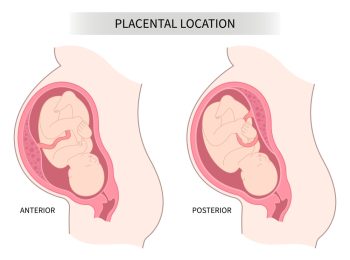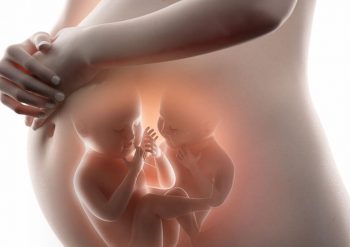Pregnancy is an exciting and often nerve-wracking time for expectant mothers. One of the most anticipated moments is feeling the first movements of the baby, also known as quickening. But what is a quickening in pregnancy and when can you expect to feel it?
Understanding the first fetal movements is crucial for both the mother and the baby’s health, as these movements are a sign of fetal well-being.
As a blog specializing in healthcare, we have researched and written extensively on the topic of quickening.
In this article, we will provide a comprehensive guide to understanding the first fetal movements, including what to expect, when to expect it, and what it means for the rest of your pregnancy.
So whether you’re a first-time mom or a seasoned veteran, join us as we unravel the mysteries of the quickening and celebrate this special moment in your pregnancy journey.
What is Quickening?
Quickening is the term used to describe the first fetal movements felt by the mother during pregnancy. It is a sign that the baby’s muscles and nervous system are developing, and the baby is becoming more active in the womb.

Quickening usually occurs between 16 and 25 weeks of pregnancy, but it can happen earlier or later depending on various factors, such as the size and position of the baby, the mother’s weight and height, and the number of previous pregnancies.
When Can You Expect to Feel the First Fetal Movements?
The timing of quickening varies from one pregnancy to another, but most women feel the first movements between 18 and 20 weeks of pregnancy.
However, some women may feel the baby move as early as 16 weeks, while others may not feel anything until 25 weeks or later.
The timing of quickening also depends on the position of the placenta, as it can cushion the baby’s movements and make them less noticeable.
Women who have an anterior placenta (placenta positioned at the front of the uterus) may feel the baby move later than women with a posterior placenta (placenta positioned at the back of the uterus).

How Does the Baby Move in the Womb?
The baby’s movements in the womb are a sign of healthy development and growth. As the baby’s muscles and nervous system mature, the movements become more frequent and complex.
The baby can bend, stretch, kick, and even hiccup in the womb. The movements are essential for the baby’s physical and mental development, as they help strengthen the bones, muscles, and organs, and stimulate the brain and senses.
The baby’s movements also help regulate the amniotic fluid and blood flow, which are crucial for the baby’s nutrition and oxygen supply.
What Does Quickening Feel Like?
Quickening feels different for every woman, and it can be hard to describe in words. Some women describe it as a fluttering or bubbling sensation in the lower abdomen, while others compare it to a gas bubble or a butterfly’s wings.

As the baby grows and moves more, the movements become stronger and more pronounced. Women may feel kicks, punches, rolls, or even somersaults, depending on the baby’s position and activity level.
The baby’s movements are not always predictable or rhythmic, and they can vary in intensity and frequency throughout the day and night.
Is Quickening a Sign of a Healthy Pregnancy?
Yes, quickening is a sign of a healthy pregnancy and fetal well-being. It indicates that the baby’s muscles and nervous system are developing correctly and that the baby is active and responsive to stimuli.

If the mother has not felt the baby move by 24 weeks of pregnancy, it may suggest that there is a problem with the baby’s development or the mother’s health. In such cases, the doctor may perform an ultrasound or other tests to check the baby’s growth and health.
The Significance of Quickening in Pregnancy
Quickening is a significant milestone in pregnancy, as it marks the transition from the embryonic stage to the fetal stage.
It is a moment of joy and relief for most expectant mothers, as they can finally feel the baby’s presence and bond with their unborn child.
Quickening also helps the mother and the doctor monitor the baby’s growth and health, as it provides valuable information about the baby’s activity level and responsiveness.
In some cultures, quickening is celebrated with special rituals and traditions, such as blessing the baby or giving gifts to the mother.
Quickening in Multiple Pregnancies
Women who have had more than one pregnancy may feel the baby move earlier and more frequently than first-time mothers.
This is because their uterus and abdominal muscles are more relaxed and stretched, and they are more familiar with the sensations of fetal movements.

Women who have had multiple pregnancies may also feel different types of movements, depending on the position and activity of each baby.
They may feel kicks and punches in different parts of the abdomen, or they may feel one baby move more than the other.
What if You Haven’t Felt Quickening Yet?
If you haven’t felt the baby move by 24 weeks of pregnancy, you should contact your doctor or midwife for advice.
They may perform an ultrasound or other tests to check the baby’s growth and health and rule out any complications or abnormalities.

However, some women may not feel quickening until later in pregnancy, especially if they have an anterior placenta or if their baby is positioned in a way that makes the movements less noticeable.
Tips to Help You Feel Your Baby Move
If you want to feel the baby move more often or more strongly, you can try the following tips:
- Lie down on your side and relax, as the baby may move more when you are still and calm.
- Drink a cold or sugary beverage, as the baby may respond to the sudden change in temperature or blood sugar.

- Eat a snack or a meal, as the baby may become more active after you eat.
- Talk or sing to the baby, as the sound of your voice may stimulate the baby’s hearing and movement.
- Gently massage your belly or apply a warm compress, as the baby may respond to the pressure and warmth.
Quickening is a natural and exciting part of pregnancy, and it signifies the baby’s growth and well-being.
Understanding what quickening is, when to expect it, and what it means for your pregnancy can help you prepare for the next stage of your journey.
Remember that every pregnancy is unique, and you should trust your instincts and seek medical advice if you have any concerns or questions.
Enjoy the magic of quickening and cherish the moments with your unborn baby.


